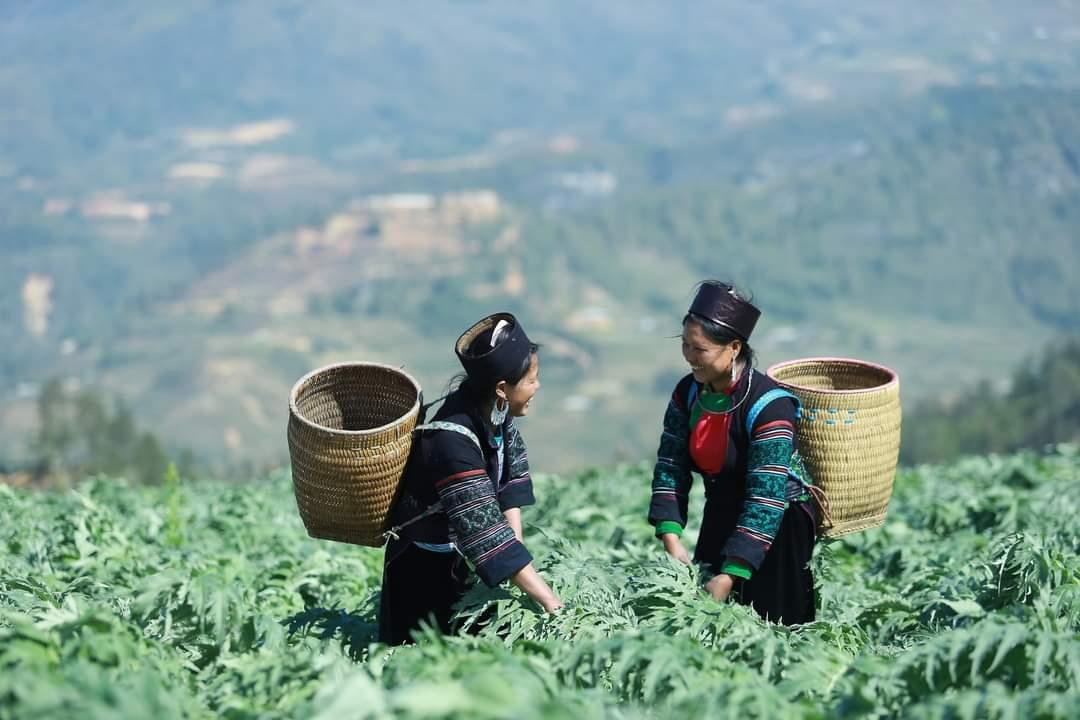November 19, 2025 | 10:28 GMT +7
November 19, 2025 | 10:28 GMT +7
Hotline: 0913.378.918
November 19, 2025 | 10:28 GMT +7
Hotline: 0913.378.918

Medicinal herbs have great potential for development in Lao Cai in general and Sapa in particular. Photo: Luu Hoa.
Medicinal herbs are one of the 5 key plants selected by Lao Cai province to comply with Resolution 10-NQ/TU dated August 26, 2021, of the Standing Board of Lao Cai Provincial Party Committee on Strategy to develop commodity agriculture to 2030, vision to 2050 (including tea, cinnamon, pineapple, banana, medicinal herbs).
Recently, the Institute of Medicinal Materials (Ministry of Health) has coordinated with Sa Pa town (Lao Cai) and other units to research, survey, evaluate, and develop a plan to develop the area for growing precious medicinal herbs in Sa Pa town. Accordingly, Sa Pa will spend 280ha of land in 8 localities to grow 17 precious medicinal plants.
On the basis of the survey, Sa Pa town has selected 8 suitable localities and areas to grow 17 medicinal species, including Artichoke, Stemona tuberosa, Vietnamese Dangshen, Japanese angelica acutiloba, jiaogulan, tuber fleeceflower, Nekemias cantoniensis, Elsholtzia, dried leaves, tinsel orchid, forest mugwort, Paris polyphylla, cinnamon, Vietnamese ginseng (Ngoc Linh ginseng, Lai Chau ginseng), wild pseudoginseng, shiso, Ligusticum striatum.
8 localities in Sa Pa town that are expected to be planted include Ham Rong ward and communes: Lien Minh, Ta Van, Ngu Chi Son, Ta Phin, Muong Bo, Thanh Binh, and Trung Chai.
Sa Pa town also selected and built a model of a preliminary processing and processing zone for medicinal herbs located in the Hi-tech Agricultural Park in Cua Cai village, Ngu Chi Son commune with an area of nearly 7.4 ha.
Sa Pa has natural conditions, soil as well as climate that are very suitable for the development of medicinal plants, which have the potential to bring jobs and stable income for people.
Translated by Hoang Duy

(VAN) Agricultural extension officers in Quang Ninh do more than transmit knowledge; they have become a steadfast support system for farmers on the path to sustainable agricultural development.

(VAN) The development of a high-quality beef cattle herd has brought major benefits to livestock farmers, creating jobs and enabling better use of agricultural by-products.

(VAN) In the eastern region of Gia Lai, crossbred cattle now account for 93%, forming a high-quality beef herd and establishing a recognized brand, the result of 35 years of persistent effort.

(VAN) Integrating agricultural extension activities with ecotourism development unlocks promising new avenues for localities boasting specific advantages in grape and apple cultivation.

(VAN) Enterprises and cooperatives accompany farmers in Tay Ninh to develop an organic seedless lime growing area, paving the way for poverty reduction.

(VAN) There were times when Pho faltered, yet his aspiration to bring the pure aroma to those who truly value clean tea kept urging him forward.

(VAN) Bich Thao Coffee Cooperative pioneered products achieving the national 5-star OCOP standard, paving the way for Son La coffee to conquer international markets.